How to properly prepare a masterpiece. P-39 Airacobra from a different angle
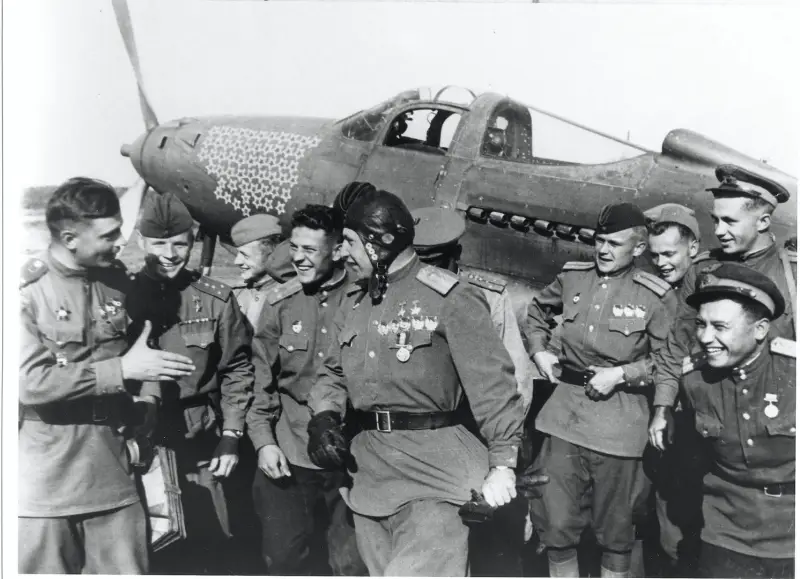
I was prompted to write this material by questions asked during a lecture-excursion in the city of Lipetsk. An interesting city, very closely connected with the last 100 years (and even more) aviation, and people interested history there's a lot there. And here’s a question for an answer, and it so happened that the conversation revolved very closely around two aircraft: the Il-2 and the Airacobra.
And when everything more or less unraveled, I realized that people have a somewhat misunderstanding of both the role that this plane played and the plane itself as a flying weapons.
And in this material I will risk trying to give answers to all the same questions: was the Cobra an excellent aircraft, or was it aircraft junk that the gentlemen of the Lend-Lease allies gave us.
The truth, as always, is somewhere in the middle.
The fact that “Cobra” is the personification of the principle “One among strangers, a stranger among one’s own” is true. The Americans were not at all eager to fight on this plane, the British abandoned the Cobra altogether, but the Soviet pilots not only fought, but fought very, very successfully.
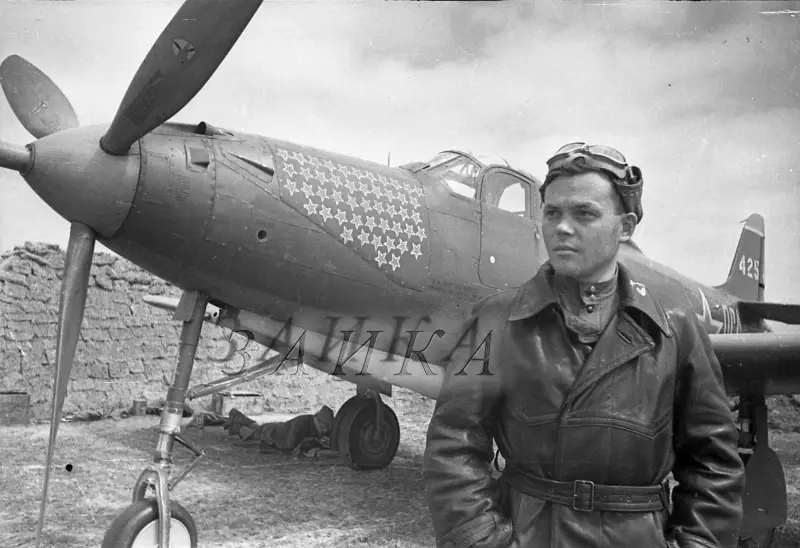
In fact, there were those who “didn’t like Cobra”, and there were also those who adored it. And we will examine this point in great detail below, because the Cobra was indeed a very specific aircraft, full of contradictions.
A little history. As always when we talk about history
In general, this flying contradiction became the second and first serial creation of the Bell Aircraft Corporation, founded in 1935. The first creation of the company was a seemingly twin-engine fighter XFM-1 “Airacuda” (“Air Barracuda”, but half of the word “barracuda” was lost along the way).
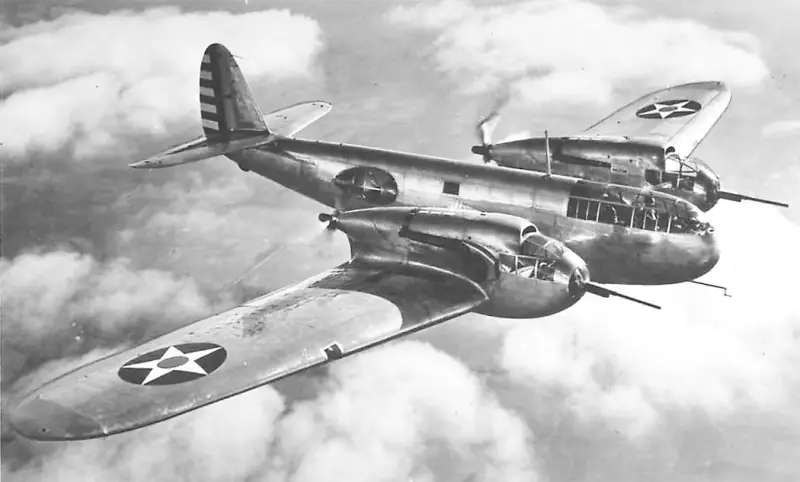
The design of the plane was stunning: the two engines were housed in huge nacelles in the middle for better weight distribution, the propellers were pushers, and gunners sat at the front of the nacelles! The crew for the fighter (okay, even if it was a heavy escort) was as many as FIVE people: a pilot, a navigator-radio operator, a tail gunner and two front gunners. The tail gunner was armed with two 12,7 mm machine guns, which protected the upper and lower hemispheres, and each of the gunners in the engine nacelles was armed with a 37 mm cannon and a 7,62 mm machine gun. As a result, the battery turned out to be very impressive, which cannot be said about the speed data - this aircraft did not reach more than 500 km/h, and the cruising speed was less than 400 km/h.
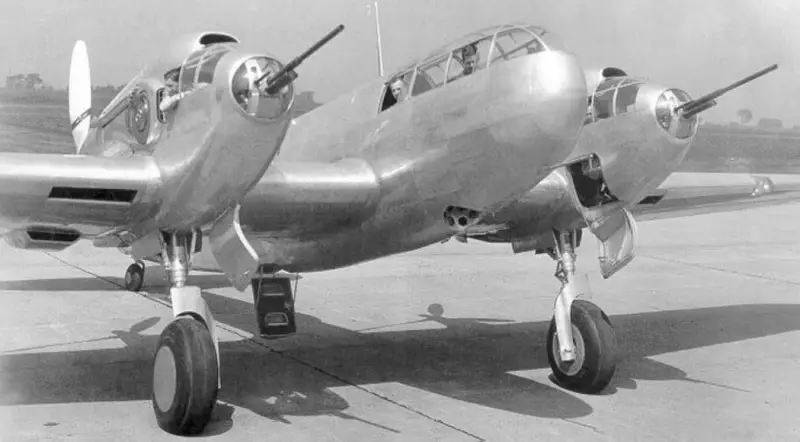
In general, it did not go into the Aerokuda series, but the company decided to keep some principles, including the joke with the shafts: each engine communicated with the propeller through a 1,7 m long shaft, which was already implemented in the Airacobra in 1937 "
In 1937, the US Air Force held a competition for a front-line fighter. The competition was won by the Curtiss company with a prototype of its P-40, which later became the Kittyhawk. And although Bell lost the competition, Air Force specialists liked the second prototype, a high-altitude high-speed interceptor. We decided to build a trial batch.
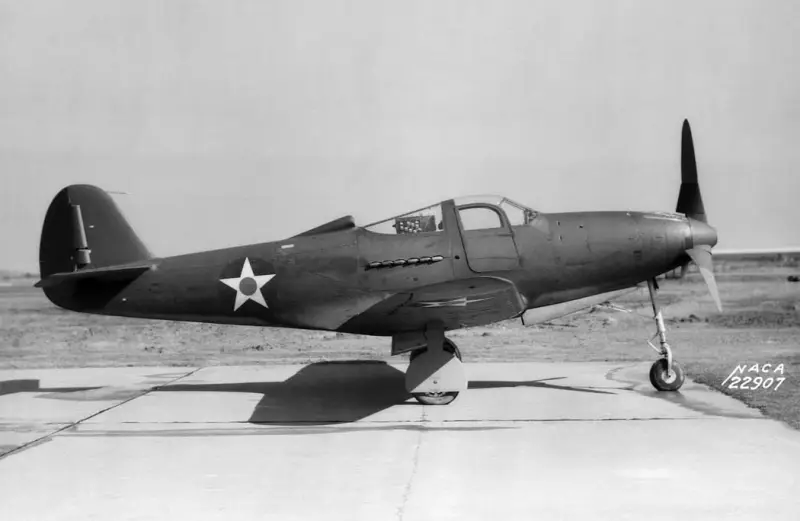
On April 6, 1939, the first flight of the XP-39 prototype took place, which surprised everyone: excellent altitude, rate of climb, excellent speed of 628 km/h; during testing, this fighter reached a speed of 628 km/h. Moreover, it is powered by the same Allison V-1710 engine. Yes, there was also a turbocharger from General Electric, which provided all this. But it was precisely the problems with turbocharging that buried the idea of a high-altitude interceptor, because the “electricians” never brought supercharging to fruition.
Bell engineers decided that if the “ears” of the boost air intakes were removed, aerodynamics would compensate for the lack of boost and flight characteristics would be maintained. But alas, physics is the same for everyone: the plane instantly lost its high-altitude qualities and what remained of the interceptor was an ordinary fighter operating at low and medium altitudes.
Collapse? But not at all! While everything was going as usual, the Second World War began. US President Roosevelt was confident that the United States would enter this war and announced a program to build 50 thousand aircraft. Just such Soviet proportions.
And the Bell company simply easily and naturally deceived potential buyers, showing them an aircraft with an unusual design and excellent characteristics, which at that time no longer corresponded to reality. Crooks? Yes.
And the military ministries of France and Great Britain... bought it! And they ordered the high-altitude interceptors they needed so much! Moreover, before this aircraft goes through all test cycles in the USA and is put into service there!
What do you want - war...
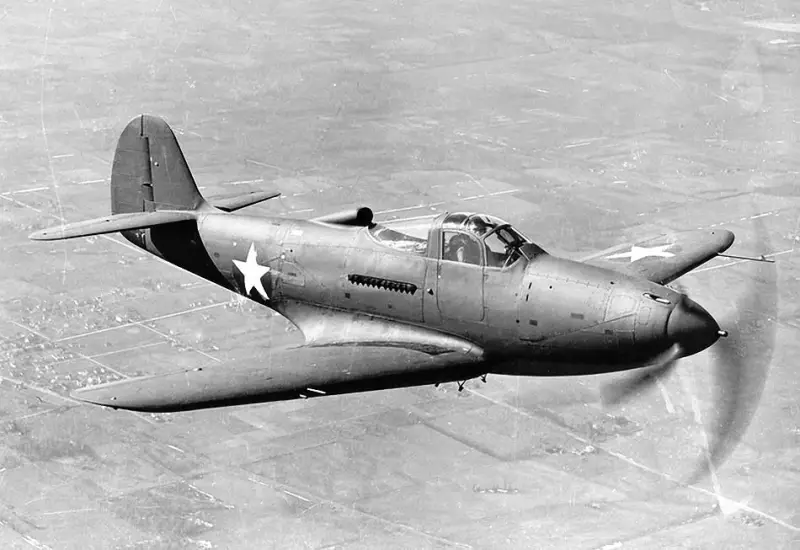
Unusual does not always mean outstanding. But this is quite applicable to the Airacobra; the plane was truly extraordinary.
The most famous, of course, is the engine layout. Everyone knows that it was located BEHIND the cockpit. But what did this give? But it was precisely this location of the engine, in the area of the aircraft’s center of mass, that gave rise to a bunch of aerodynamic consequences.
1. The plane turned out to be very maneuverable. The turning radius was 253 meters, which was very, very good: for comparison, the Messerschmitt Bf-109F had a turning radius of 270 meters, and the British Spitfire, a masterpiece of aerodynamics, had a turning radius of 212 meters. That is, between the best German and the best British fighter - yes, it’s very even!
The downside was that it stalled into a tailspin when the pilot made mistakes, moreover, unforced mistakes, more typical of not very experienced pilots. That is, an experienced pilot flew easily and naturally, but for beginners it was very difficult with the Cobra. American pilots were openly afraid of this plane, which cannot be said about their Soviet colleagues.
Ask why? Everything is elementary simple. Which aircraft was the main fighter of the Red Army Air Force at the beginning of the Great Patriotic War? That's right, Polikarpov's I-16. The aircraft is unique precisely because the aerodynamic focus of the aircraft practically coincides with the center of gravity. We will not discuss the very concept of aerodynamic focus here; I will simply note that the further apart the aircraft’s center of mass and aerodynamic focus are, the more stable this aircraft is in flight.
At that time, the I-16 was a very difficult aircraft to control precisely because its CM and AF were practically the same. The plane was unstable and therefore very maneuverable. By the way, the next aircraft that had approximately the same AF and CM separation was the Su-27, after the appearance of which they started talking about super-maneuverability.
So for the Soviet pilot, the Cobra with its rear alignment did not become such a discovery. Those who flew well on the I-16 did what they wanted on the P-39.
Please note that our specialists from the Flight Research Institute also understood this very well. Before presenting the Cobra to the pilots, the aircraft was thoroughly studied, and not everyone was retrained to use it. Here I recommend as a reference the book “Sky of War” by A.I. Pokryshkina. For six months he and his regiment stuck around in occupied Iran and studied materiel. And then it began.
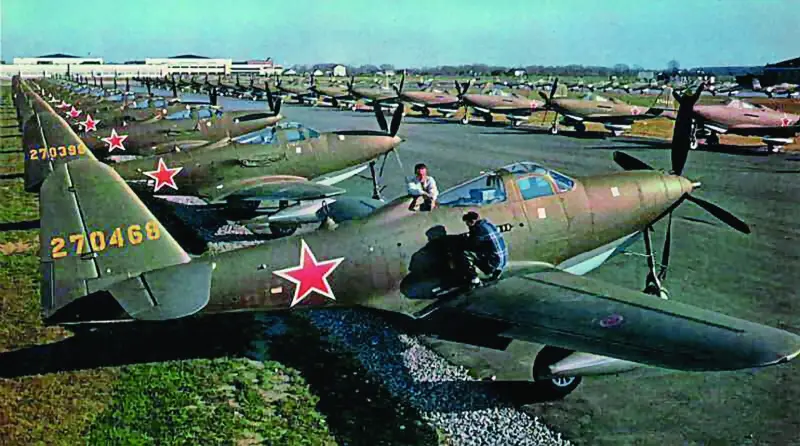
But the P-39s were mainly used by guards regiments, that is, units with experienced flight personnel. And this was the considerable success of using this aircraft on the Eastern Front. I had to pay attention to the problem of stalling, but again, this was not difficult for an experienced pilot.
2. Additional protection of the pilot by the engine. This is understandable; the rather massive engine protected the pilot from attacks from the rear hemisphere, calmly withstanding even hits from air cannon shells.
3. Aerodynamics. The P-39 had a very decent performance, better than aircraft with a front engine. The narrow profile significantly improved the flight characteristics of the aircraft. Plus, Bell designers used a very original arrangement of cooling radiators, which also played a certain role.
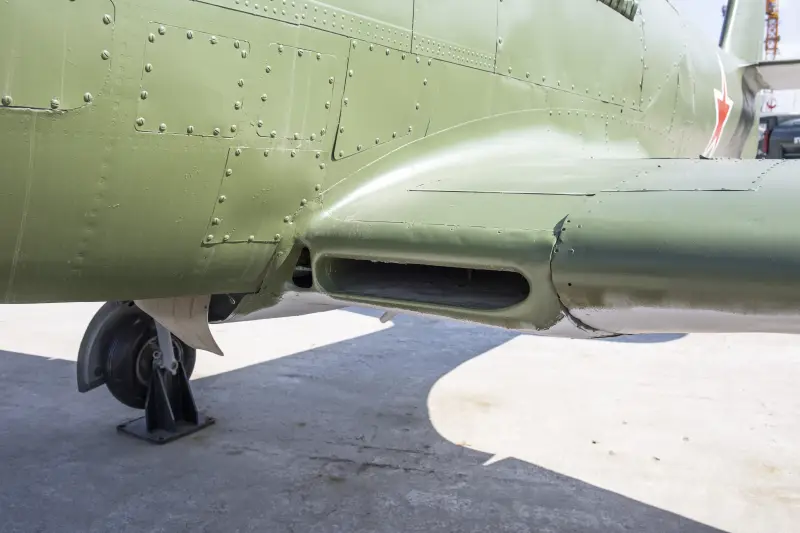
Not a large tunnel under the engine (where they painted hari on the P-40), but these neat tunnels led to the radiators inside the wing.
4. In the bow, a 37-mm cannon with 30 rounds of ammunition and two 12,7-mm machine guns with 250 rounds of ammunition per barrel were easily placed in the bow. Two (and later four) 7,62-mm machine guns in the wing sock no longer looked so serious, and in our regiments they were usually removed as unnecessary; the weapon’s power was sufficient. Then, as modifications progressed, the four 7,62 mm were replaced by a pair of 12,7 mm, and thus the final armament consisted of a 37 mm (or 20 mm) cannon and four 12,7 mm machine guns. Not exactly enchanting, but: Soviet aircraft could not boast of such a set of weapons at that time.

Of course, the question is: why was such a Terminator needed in the sky at the end of the 30s?
There’s a whole Cobra paradox here: a 37-mm shell was enough to tear apart any fighter, but a bomber was shattered into pieces by 2-4 shells. There was more than enough evidence during the war years.
But here’s the problem: the bombers tried to climb higher so that the air defense would not reach them. That is, at altitudes above 6-7 thousand meters, and there the Cobra was, to put it mildly, useless.
They also criticize the rate of fire of the Oldsmobile cannon, 2-3 shots per second and ammunition load of 30 shells. That is, only very experienced pilots could use the gun 100%. The rest relied on large-caliber machine guns, which, in fact, were also quite effective weapons.
This is where one of the secrets of the Cobra is revealed: it was sent into service primarily with guard regiments! And there were pilots who, by and large, didn’t care what they were flying, as long as they flew and shot. The Germans in the North shied away from the guards' red-nosed Hurricanes, so what can we say when our guardsmen were given an aircraft three times better than the Hurricane?
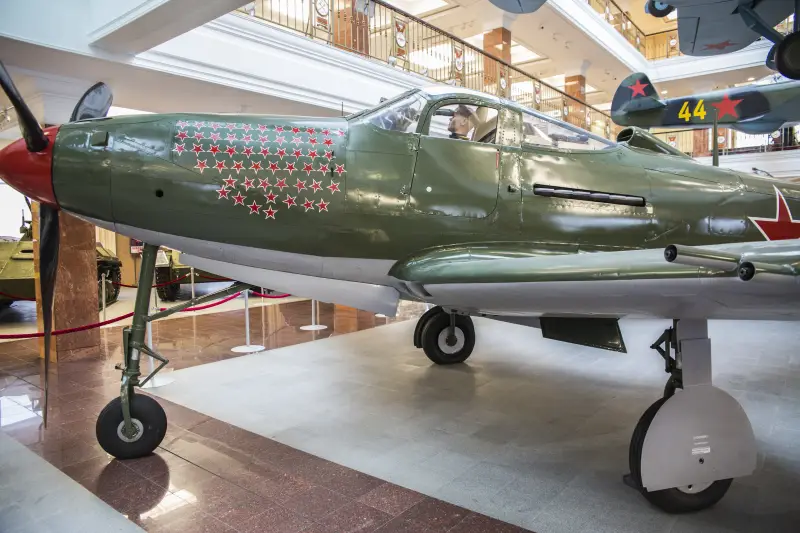
Yes, this particular plane is slightly higher in black and white. Not a copy!
5. The most interesting and usually unnoticed. Fast service. This is where the Cobra really was a very interesting aircraft. Imagine a plane after landing. The pilot went to rest and get a new assignment, and a crowd of technicians gathered around the plane, who had to perform a bunch of manipulations:
- load the gun;
- load machine guns;
- fill in fuel;
- add oil;
- add antifreeze/water;
- clean the spark plugs;
- check the functioning of all systems, service weapons, etc.
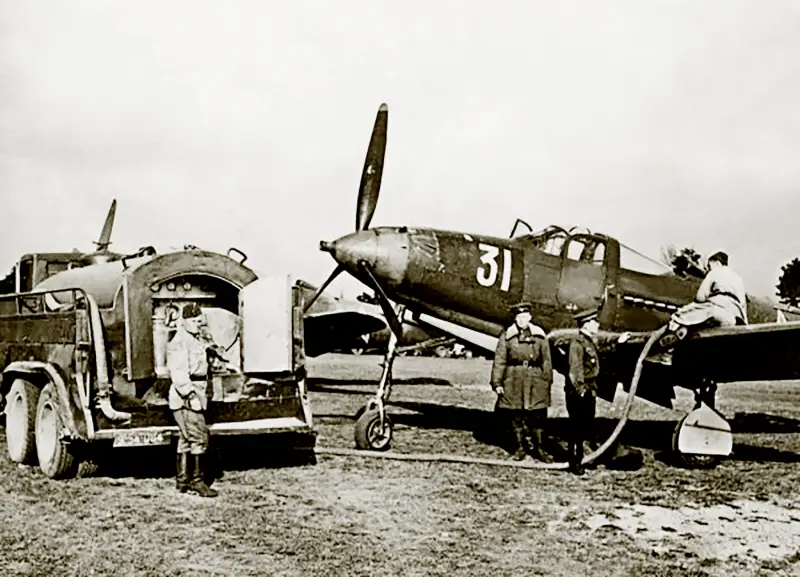
It's minimum. But at the same time servicing the engine and loading weapons on the same Yak was unrealistic. First, the engine (and on some models the machine guns also had to be removed), which still needs to be reached, and only then the submachine guns. On the Cobra, everything could be done at the same time: weapons in the nose, engine behind the cockpit, tanks in the wings. Invaluable when you urgently need to fly out again.
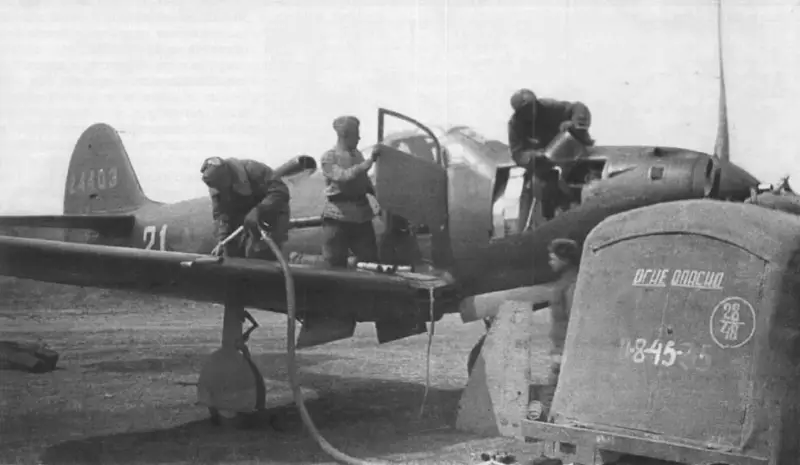
In general, if you look closely at the Cobra without skin, it becomes clear that the aircraft can be maintained and repaired by several teams, since equipment of various kinds was concentrated in different parts of the aircraft, which made it easier for specialists to access. And the fact that the aircraft’s skin consisted of almost quick-release hoods, by dropping which one could gain access to anything, is simply wonderful.
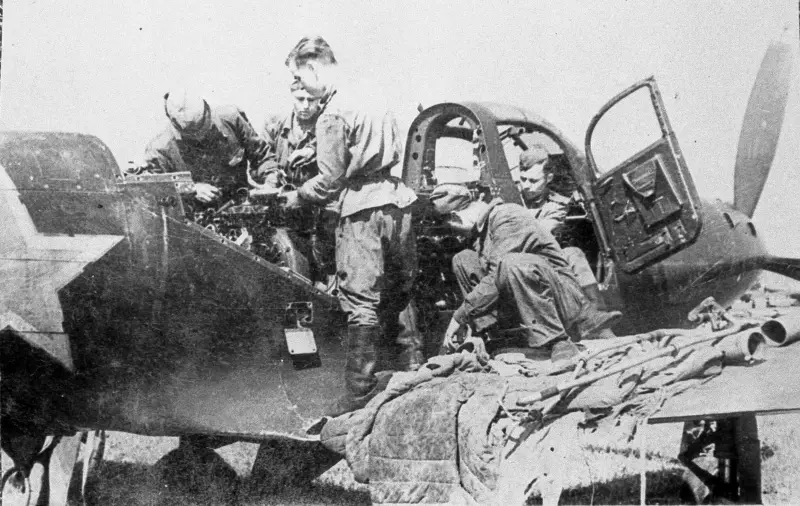
In my opinion, it was the only aircraft in which it was possible to change the engine without the work of removing the propeller and weapons. This greatly facilitated routine maintenance.
6. Indirectly, but nevertheless. The absence of an engine in the nose made it possible to place the nose landing gear there, which on this aircraft was very original: three-post with a nose gear.
The idea was good and even received an unexpected continuation. In general, the idea itself was a good one: to provide pilots with the opportunity for maximum accident-free takeoffs and landings, and in those years, 2/3 of accidents occurred during takeoff and landing. And such a landing gear design allowed the pilots to taxi on the ground, take off and land even on muddy ground, without fear of the bonneting, which was the scourge of aircraft of that time.
Boning is the overturning of an aircraft through the nose onto the cockpit, which has claimed the lives of a huge number of pilots. The Cobra, in which it was very difficult to cause a nosedown, since the engine at the rear of the aircraft did not allow this to be done, was a unique aircraft in this regard. Another question is that many pilots died after switching from Cobra to classic fighters precisely because of the bonneting.
And taxiing in the Cobra was very pleasant. The cockpit was moved forward, which, together with the front landing gear, provided very good visibility. I doubt that even Pokryshkin himself was able to repeat the trick of landing on a highway, say, on La-5.
More than enough has already been said about car-type doors and related issues; the right door was a “working” door, and the left was an emergency exit. In addition, a distribution panel for radio stations was mounted on the left door and there were no latches that would hold the door open. That is, a hatch in fact.
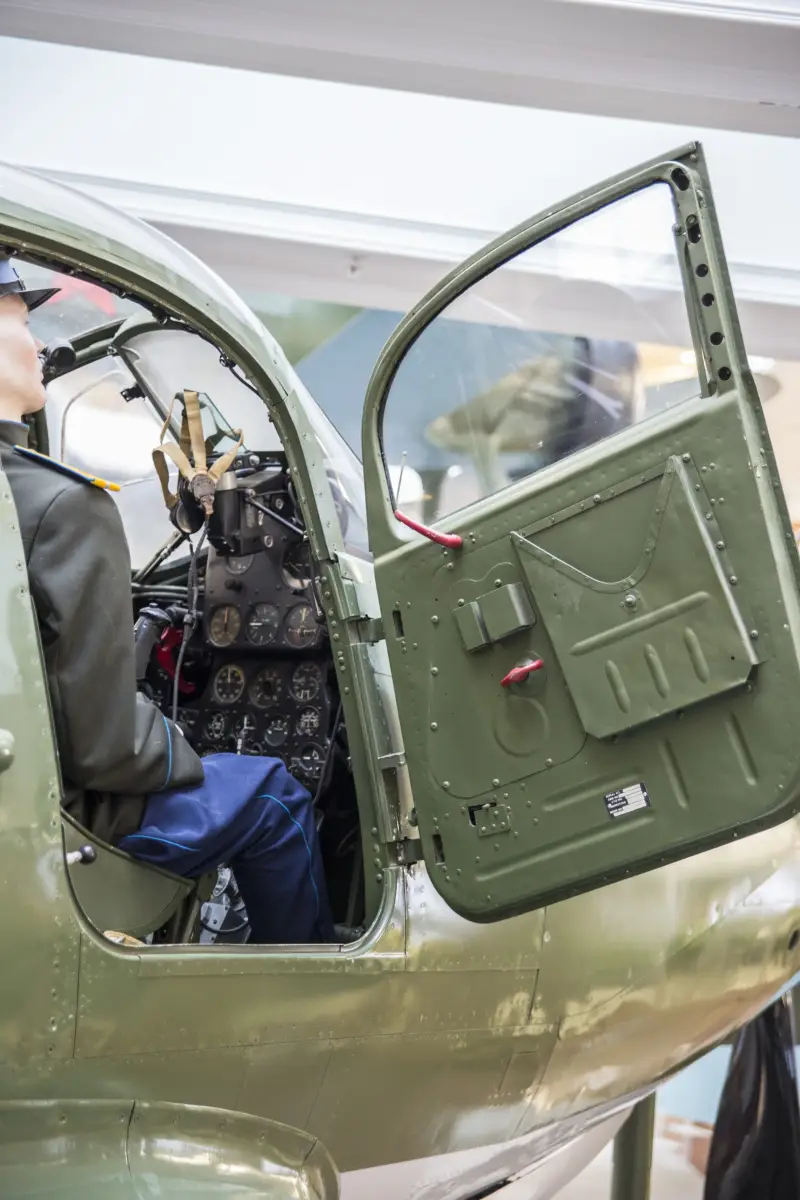
Ejecting the pilot sideways, of course, was unsafe, and such an ejection pattern often led to contact of the pilot with the tail, but accidents did not happen every day. But the pilot was located in a luxurious, spacious cabin with excellent visibility and comfort. Check it out: the windows on the doors actually rolled down, like in a car, the cabin was replete with useful little things such as pockets for storing maps, an independent gasoline heater that warmed the cabin and weapons compartment at altitude. A very useful option, since there was no engine that would prevent the machine guns from freezing. There was even a mini-toilet, in the form of a urinal on a hose, because the plane was planned to be used also in the Pacific Ocean, where the distances are quite considerable.
That's all, or almost all, that happened when the engine was simply moved behind the pilot's back.
And the last positive property: this chassis design turned out to be in great demand after the end of the war, when the development of jet technology began. Then it immediately became clear (back on the Me-262) that the classic tail wheel scheme is not applicable here due to the fact that the wheel simply does not last very long, being in the flow of high-temperature engine exhaust. And the Cobras with their design were very useful for retraining pilots.
So why did Cobra turn out to be so unique?
I have been saying for a long time that an aircraft cannot be judged by flight characteristics numbers. It must be considered in its entirety, where the first thing is what the aircraft was originally intended for.
But initially it was supposed to become a high-altitude interceptor! That is, take off, quickly gain altitude, find enemy bombers and destroy them. Plus, at the same time, buy escort fighters if they get in the way under the wings. That is, to be ready for maneuverable combat.
The very same Pokryshkin “Height, speed, maneuver, fire.”
The turbocharger, alas, has removed the height. The high-altitude interceptor did not work out, and instead it was replaced by the most ordinary, albeit unusual, front-line fighter. Therefore, the same British, who already had the Spitfire front-line fighter, quickly abandoned the Cobra and sold it to the Russians.
It is a pity that you and I will not be able to imagine the... shock (there is another word, but it is not applicable here, unfortunately) that the British experienced when they received letters of demand from the USSR for the supply of another P-400 Airacobra.
“What, sir? "Air Cobras"? The same ones? - “Yes, what a cool plane, give me more!”
Anyone who is aware of Lend-Lease and the cash supplies that preceded it knows: the British (unlike the Americans) did not supply us with ANYTHING decent. And suddenly this... There is something to be confused about, but everything quickly fell on track, and the Bell company began supplying aircraft to the Red Army Air Force in much larger quantities than its own army and navy.
But at that difficult time we needed a front-line fighter! And, preferably, allowing you to fight German aircraft (that is, better than the Hurricane and Kittyhawk) not only on an equal footing, but even surpassing them. Here... "Cobra".
Let's now put everything written above into one
The Cobra, based on all its characteristics, was a very good aircraft. In the conditions of the Eastern Front - even very good, because our altitude was... low. It so happened, the reasons for this need to be analyzed separately. But even Pokryshkin recalled in “The Sky of War” that at the end of the war, echeloning was used everywhere, with Yaks below, Cobra and La above. That is, the American plane, which was poor in altitude, was quite at the level of the good Soviet ones. Everyone has their own requirements.
Yes, the rate of climb was so-so, at the Hurricane level, and even then, only on native American gasoline. But on the American “74th” our planes also gained a lot of speed, and in general there was a practice of interfering with the Soviet B-100 and the American “90” and the planes flew on the resulting fuel. The Germans, by the way, burned gasoline with an octane number of “XNUMX” in their engines.
But besides the poor rate of climb and altitude (or not so bad), the tendency to fall into a tailspin and the awkward exit of the vehicle in the event of an accident or being shot down, the Cobra also had very significant advantages.
1. Possibility of quick comprehensive preparation for takeoff.
2. Landing gear design, which significantly increased accident-free flights.
3. Powerful weapons.
4. Radio stations.
Here is the last point - it is really the most important on the list. All negatives can be leveled out. They don’t get shot down every day; Pokryshkin, for example, was never shot down in a Cobra, so an emergency ejection from an airplane isn’t exactly scary—it’s a lottery. The rate of climb was also easily solved by the same “Kuban whatnot”, that is, formation with echelon.
I will not tire of repeating that the reason for the defeat of the Red Army Air Force in the first days of the war was not untrained pilots (they were absolutely at the level of their German colleagues), nor “outdated” fighters, but an archaic, Civil War-level, control system with a complete lack of communication.
There was no communication in the Red Army Air Force until 1943, when the Allies began helping. Read anyone, Pokryshkin, Skomorokhov, Rechkalov, Rakov, any veteran in Drabkin’s collections - everyone will say one thing - there was no connection.
Soviet RSI/RSB stations could not be compared with radio stations in Western countries. That is why there was this disgrace for control with swinging wings and waving hands in the cockpit. And control from the ground by laying out direction strips with jumpers indicating the height.
The Americans, who, unlike our pilots, practically did not fly in pairs or threes, realized that stable and long-range radio communication was the key to success. The squadron must fly and carry out a combat mission, and not stare into two dozen eyes, catching the moment when the leader shakes his wings.
Control of a group/squadron in battle, the ability to target, retargeting to other areas, warnings about danger - you can’t list everything. Control is very important, which is why in 1941-42, Soviet fighters stupidly rushed around the sky in search of the enemy, not finding him and causing fair reproaches from ground troops.
One of the pilots of that war said that a radio-equipped regiment was equal in effectiveness to three regiments without communications. And, if you look at the situation before June 22.06.1941, 4, then this is approximately what happened: 10 thousand German planes easily destroyed XNUMX thousand Soviet ones. And the generals fought in their offices, but they couldn’t do anything.
The Cobra had simply wonderful radios. If a Soviet plane usually only had a receiver, and only the command vehicle was equipped with a transmitter, then Grigory Rechkalov’s car, which is carefully stored in the museum in Verkhnyaya Pyshma, has TWO receivers and TWO transmitters. This can be seen in the photo simply beautifully.
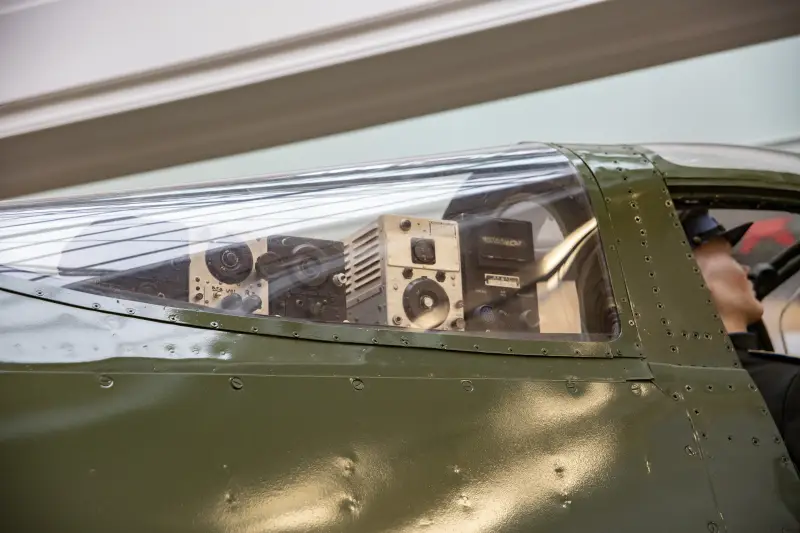
One pair is for communication within the squadron/group/regiment (this is a pair of smaller “cubes”), the second pair is for communication with ground control points. More long-range than the first one. Moreover, such a set of radio equipment was installed on all American aircraft. The practice of naval aviation has shown this. That if the squadron commander is incapacitated, someone will replace him. The loss of a command vehicle should not turn the squadron into a flock of blind revelers, as happened with our aircraft.
In general, in terms of radio communications, I recommend reading Pokryshkin, he has so much written between the lines in this regard...
Yes, we were very far behind the rest of the world in this matter, so Soviet radio stations simply blew the minds of the pilots with noise and crackling, and there was also such a cute feature when the radio stations spontaneously left the frequency. Typically, communications specialists on the ground simply tuned a single frequency, and the pilot could make fine adjustments in flight. If he could, he seemed to have something to do in the air, especially in combat. And there was no talk of any channels with land at all.
This is precisely where the secret of the Germans’ success lies, solely in their advantage in communications. Everything else and fairy tales about the outdated aircraft of our Air Force are really fairy tales of people who are not very clear of conscience.
American radio stations were simply wonderful. Each station had a number of circuits, each tuned to a specific fixed frequency. Moreover, each frequency had quartz stabilization. To switch to another frequency for any reason, it was enough to simply call the quartz number. It was convenient and fast. It is especially useful in combat, when the transition to another frequency is accomplished by simple switching, and not by shamanism with tuning and adjusting the frequency. In combat there are slightly different tasks.
And this was precisely appreciated by those to whom it was important. Including Pokryshkin, to whom I have already referred a hundred times. Here you need to understand that by the time he switched to the Cobra in 1943, Alexander Ivanovich was no longer just an ace pilot, he was first and foremost a commander, for whom the issue of controlling a squadron in battle was very important. And he just appreciated the capabilities of the American aircraft.
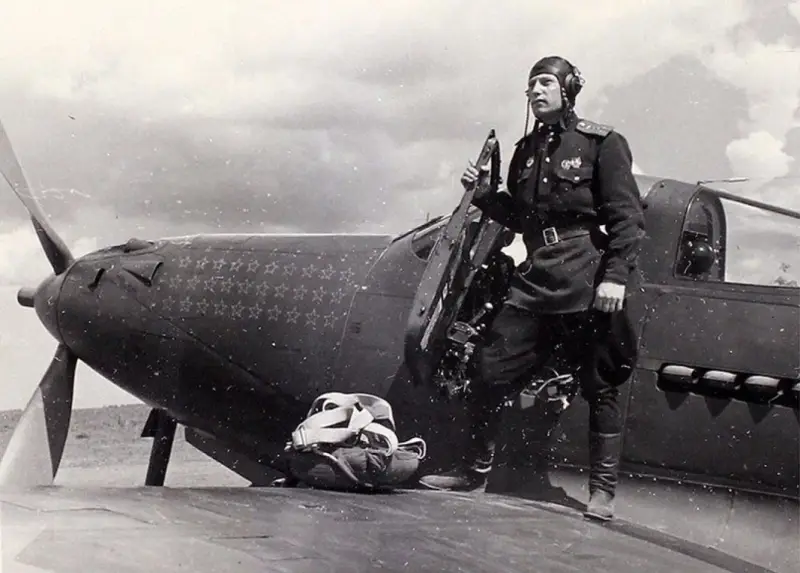
The excellent aerobatic equipment (the radio compass alone is worth it) of the Cobra, coupled with excellent radio equipment, is what made the R-39 one of the best fighters of the Red Army Air Force.
Regarding point 3. A gun in this configuration - a 37 mm with a b/c of 30 shells or a 20 mm with a b/k of 60 shells - is realistic for an aerial sniper. The ShVAKs on the La-5 loaded up to 120 shells per barrel, for example. The usual load was 80 shells, which was still significantly more than the American. But there were also 4 12,7 mm barrels with a thousand rounds of ammunition. This is also a lot; in 1942, our pilots on the P-40 with such weapons calmly approached the Germans and shot them down.
Point 2. Speed of preparing the aircraft for the next flight. A very important parameter, which for some reason many writers simply do not notice point-blank. Meanwhile, when you read the memoirs that the Junkers flew overhead all day and bombed, you read from Rudel how he made 7-8 sorties a day, and the archives about the scene of events say that one air regiment operated, then here it is , understanding of how aviation should be used.
If you have an air regiment of 24 aircraft, but it takes half as much time to prepare as it takes the enemy to prepare the next flight, you have two regiments against one enemy. Of course, people are not made of iron, but there are always options. Spare pilots, those with planes undergoing repairs, or those who have lost their planes - you can find a way out.
But when engine engineers don’t jostle with gunsmiths and tankers, if you really really need to quickly prepare planes for takeoff, this is very important. If Nagumo's gunsmiths on the aircraft carriers had moved faster at the Battle of Midway, perhaps the American ships would have sunk, not the Japanese ones. A classic example, in my opinion.
The strange/original layout of the Cobra made it possible to very quickly prepare the plane for takeoff.
Well, the tactics of application
In the end, what is the recipe for a masterpiece? The recipe is simple: nothing masterpiece. Not the fastest aircraft, with not the most excellent performance characteristics, with decent weapons, maintainable... In general - no matter how you look at it, it’s not particularly outstanding. But everything was done as it should.
The main thing is that the P-39 was given to the guardsmen, who at that time had already fought better than many. Therefore, in experienced hands, the Cobra realized all its advantages, the main one of which was the ability to accurately control aircraft in the air.
The Germans lost their main trump card in 1943 - they ceased to have an advantage in management. We already had radars, there was communication with aircraft from the ground, that is, Soviet pilots stopped searching for the enemy at random, blindfolded.
They often ask: why then didn’t Pokryshkin praise Cobra, but, on the contrary, seemed to criticize it? And praised our planes?
The answer is simple: a party member and Hero of the Soviet Union would try to praise American technology! Moreover, in a book that has been reprinted so many times! They would immediately call where necessary and point out the mistakes. That’s why Alexander Ivanovich’s “Cobra” is from the “you can fight, there’s nowhere to go” area, like the “Hurricane”. But Pokryshkin was in no hurry to transfer the regiment and division to Yak and La. Moreover, he used all his authority to prevent this from happening. Yes, exactly when retraining for the La began and the pilots began to struggle, getting used to the visibility and three-post landing gear of the American aircraft.
In general, “Sky of War” is a miracle, not a book! There is so much written between the lines that when you understand what Alexander Ivanovich wanted to say, you are simply amazed. Just the phrase that “Without the Tiger the guys there went blind” is short, but it says so much about how important it was to control the battle from the ground and coordinate the actions of the pilots. And to what extent Pokryshkin’s pilots are already accustomed to such work.
I looked at Rechkalov’s plane in the Verkhnyaya Pyshma museum, and could not see that “iron” on which it was possible to fight only through “I can’t”. I saw the plane of a victorious pilot, a sniper-guardsman and the plane of an experienced commander who knew and understood the battle. So we were very lucky that the Cobra did not become a high-altitude interceptor. For our pilots the plane was just what they needed.
Information